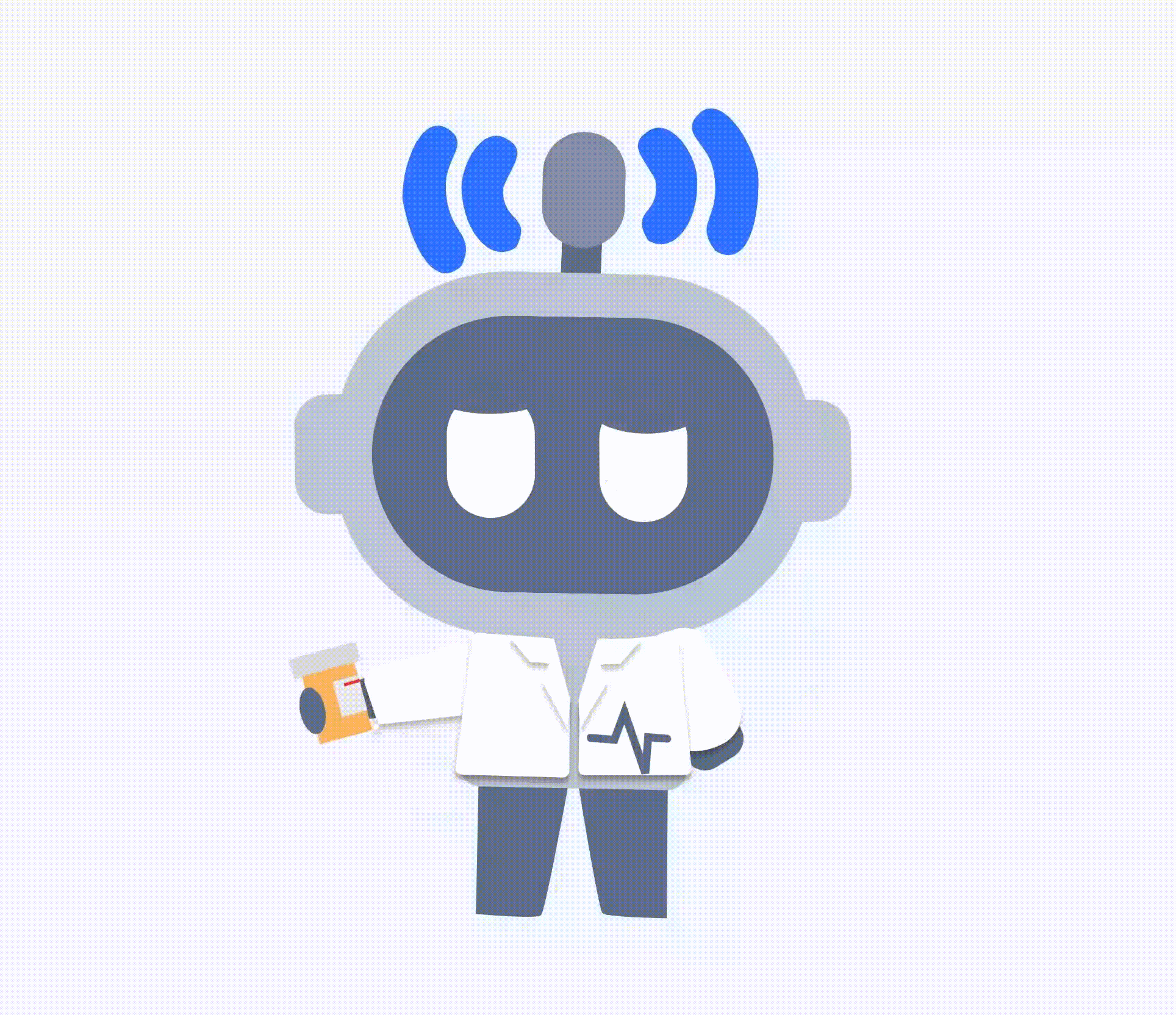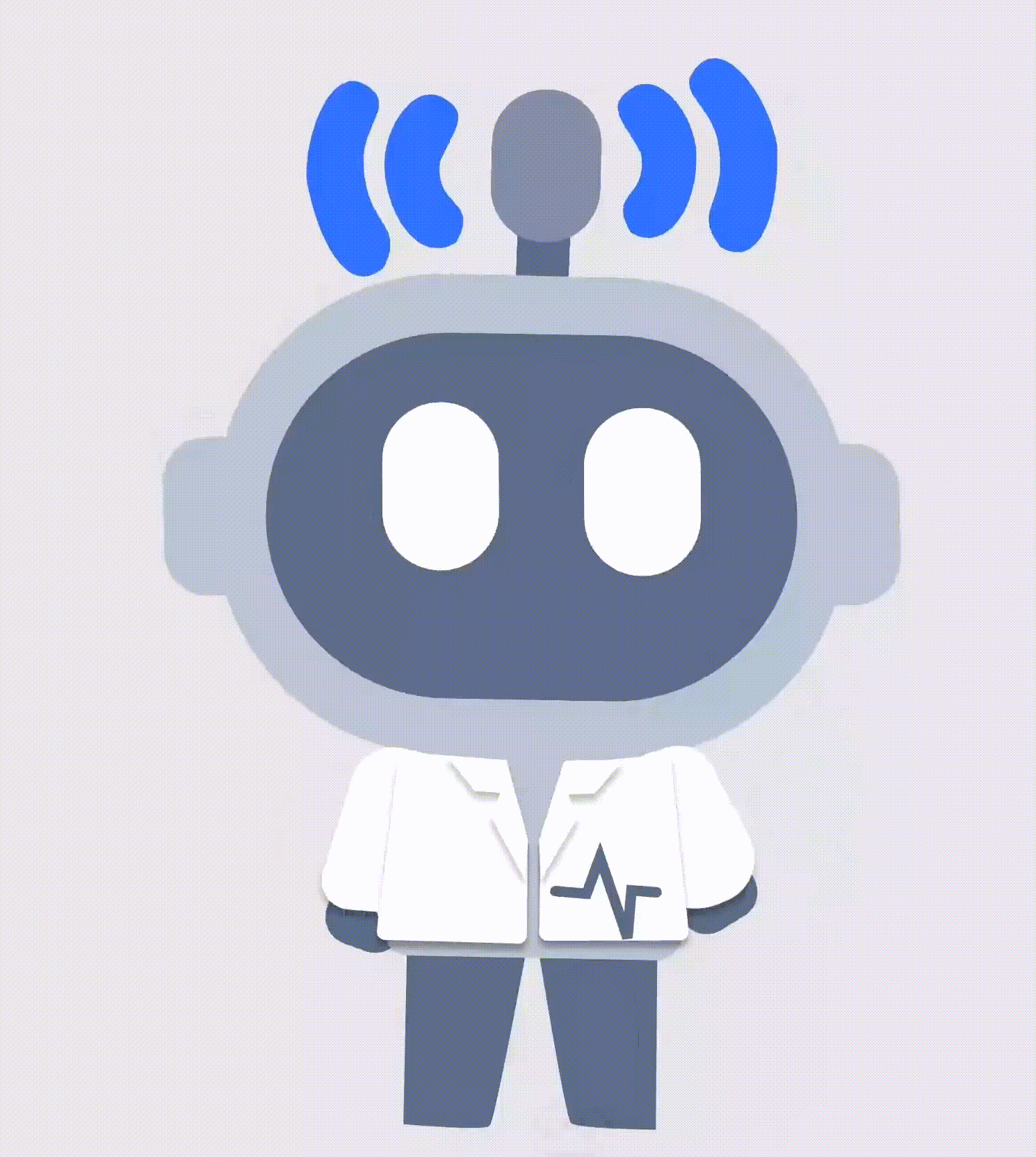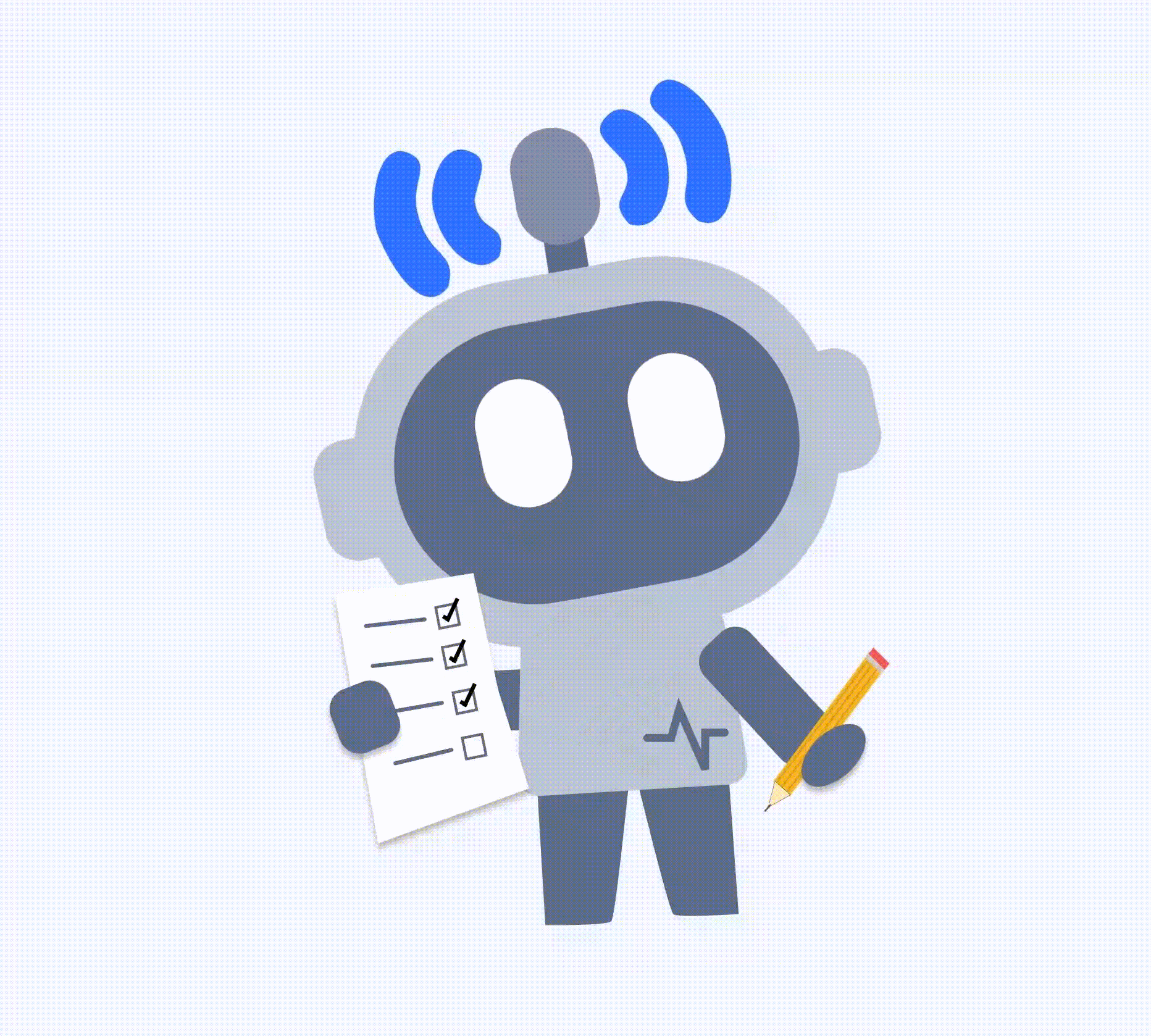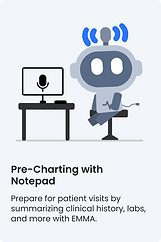.png)
Smart checklist for clinicians - tracking conversations, easing documentation.
Visit my designs at empathia.ai


Project Type
Feature addition for an existing product
(Chrome extension)
The Team
Celine Lin
Yawen
My Role
User Research
UX Design
Wireframing
Clinical Advisor/UX content writing
Tools
Figma
FigJam
Miro
Overview
How might we help clinicians track essential consultation questions with ease?

During a consultation, clinicians must collect key patient details—name, DOB, medical history, and symptoms—while meeting clinical and regulatory requirements.
In a fast-paced setting, this can lead to errors or inefficiencies.
Without a structured system, clinicians may rely on memory or manual checklists, which is time consuming and increases risk of oversight.
The Problem
Clinicians struggle to track essential consultation questions in a fast-paced environment, leading to missed steps and increased cognitive load.
The Solution
Empathia AI Consultation Copilot automatically tracks completed questions, reducing cognitive burden and ensuring all key information is collected.
Background
46,860
Pharmacist

Before brainstorming, I researched the problem space and competitors a bit more.
Competitive analysis
I researched existing tools that help pharmacists document consultations, focusing on solutions for minor ailments.

Research background: Pharmacy focused research
In 2023, Canadian pharmacists gained the ability to prescribe medications for minor ailments, enhancing their role in reducing patient wait times and relieving pressure on primary care.
However, each province has specific guidelines, and pharmacists must ask detailed questions, making the consultation process time-consuming and sometimes unfamiliar.
With over 46,860 active pharmacists in Canada, there is a clear need for tools to streamline these consultations and reduce the administrative burden.
Implication
As pharmacists take on more clinical tasks, missing required questions can impact patient safety and compliance. Tools that track consultations in real-time can reduce errors, ease workload, and help pharmacists focus on patient care.

Most competitors rely on manual input, making real-time documentation difficult and adding to pharmacists’ workload.
There’s a clear opportunity for a voice-powered, real-time documentation tool designed specifically for pharmacists.
Findings & Analysis
Pharmacists need tools that support care — not just check boxes.
Affinity map
I spoke with pharmacist advisors on the Empathia team to learn how they track consultation notes for minor ailments. Using an affinity map, I grouped key themes:
-
Tracking questions in real-time to avoid missed info
-
Keeping conversations natural while following checklists
-
Having clear records to meet regulations
These insights highlighted the need for tools that help pharmacists stay on track without disrupting care.

Persona
I summarized the most common motivations, goals, and frustrations into a single persona.
_edited.png)
Feature roadmap
From the main frustrations that were expressed, I outlined the main feature to address this issue

Product Specs
Comprehend the Situation:
Pharmacists struggle to track conversations and manage documentation during consultations, leading to missed questions and increased mental load.
Identify the Customer:
Pharmacists conducting clinical services (e.g., medication reviews, minor ailment prescribing).
Report Customer’s Needs:
As a pharmacist, I want automated documentation during consultations so I can focus more on patient care.
Cut Through Prioritization:
Focus on high-frequency tasks like Med Consults and Minor Ailments documentation to streamline with automation.
List Solutions:
-
Voice-to-text AI for real-time transcription
-
Automated form-filling
-
Live checklist for missed questions
-
System integration for seamless data flow
Evaluate Trade-offs:
Cost vs. Time Savings: High upfront cost, but long-term time reduction
Privacy vs. Efficiency: Must ensure strong security for patient data
Accuracy vs. Maintenance: Requires regular updates to maintain accuracy
Summarize Your Recommendation:
Implement a voice AI scribe to reduce documentation time, enhance workflow efficiency, and improve patient care with proper privacy and updates.
Ideation & Design
Turning insights into action: designing a smarter consultation tool.
User flows
I designed the user flows to streamline the pharmacist-patient interaction with the Chrome extension.
Key steps include:
-
starting the consultation
-
activating voice-to-text AI
-
using a live checklist with AI auto-checks
-
manually reviewing and checking off items.
This ensures a smooth conversation while minimizing the mental load for pharmacists.

_edited.jpg)
Low-fidelity explorations
Here are some sketches that illustrate potential designs for the chrome extension.

Mid-fidelity wireframes
After brainstorming layouts, I selected my favourites and created a cleaner set of screens. These are a few of the key screens:
_edited.jpg)
Current extension view. Have the option to start recording interaction.

Start recording: Tab appears on the side specific to the minor ailments template selected

Tab expands to show checklist with all the required information needed to be gathered.
After creating the mid-fidelity wireframes, I opted for a collapsible checklist tab on the side. This design allows pharmacists to easily access the checklist during consultations while maintaining focus on the patient and conversation, without cluttering the screen.
Usability Test
Design iteration: switching from tab to button for improved accessibility.
After reviewing the designs, the team replaced the side tab with a button for easier access. Since the Chrome extension already uses expandable tabs, a button keeps the checklist intuitive and unobtrusive.
Pharmacist advisors also found the product useful and agreed a button improves accessibility.
High-Fidelity Prototype
Bringing it all together to create a high-fidelity prototype.
Based on the user research, and the low-fidelity and mid-fidelity explorations, the team and I went ahead and designed a high-fidelity prototype.


Current design, with no consultation aid.
Purple button to launch AI consultation copilot


When the button is clicked, the Consultation Copilot launches — tailored to the selected template for any of the 21 minor ailments, capturing all required clinical and legal information.




Final Product
Final product launch: streamlining the pharmacist-patient interaction.
After several iterations and user feedback, the final product was launched. Here's a quick look at the seamless user experience in action, showcasing how the checklist effortlessly integrates into the pharmacist-patient interaction for improved efficiency and reduced mental load. The extension can be downloaded here!

Conclusion
Successful launch and real-world impact.
After receiving feedback from both the team and pharmacist advisors, I iterated on the design to ensure the checklist feature was intuitive and efficient for pharmacists. The final product was successfully launched and is now being used by clinicians across North America, streamlining the consultation process.
This allows pharmacists to focus more on patient care while reducing mental load and documentation time. This project reinforced the importance of user-centered design and collaboration across disciplines to deliver a seamless experience. Moving forward, I will monitor metrics on how the feature is used and keep iterating. Also expand to more than just pharmacists, this is a tool that can be used by any clinician.
Extra!
Additional design contributions
In addition to designing the core product, I created marketing and graphic design materials to help promote the brand. This included animations for this page, product feature cards, and other visuals used in marketing campaigns. These assets played a key role in communicating the tool’s value to clinicians and supporting a smooth adoption process.
Hover over the product cards to check it out!


















_edited.png)
_edited.png)
_ed.png)
